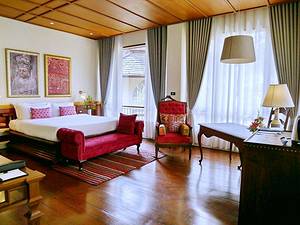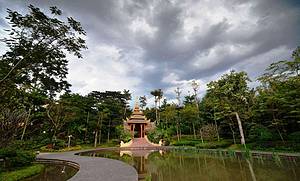Wat Chiang Man, Historic sanctuary with unique elephant chedi
Th Ratchaphakhinai
4.3
Introduction
Chiang Mai Temple, also known as Wat Chiang Man or Wat Chiang Mun, is one of the oldest temples in Chiang Mai. It was once used as a palace and residence for the king. In 1926, when King Mengrai established Chiang Mai as the capital, he converted the oldest set of official residences in the city into this temple. The main hall of the temple is decorated with large teak pillars in Lanna Thai style and typical northern Thai architecture, which are very unique. Inside the restored main hall in 1993, there are two precious Buddha statues: one is a miniature crystal Buddha statue made 1,800 years ago, believed to possess the power to bring rain; the other is an even older statue of the Buddha, said to have originated from India or Sri Lanka, adorned with gemstones and highly valuable. The colorful murals on the temple walls depict various scenes from the life of King Mengrai, the founder of Chiang Mai, and were completed in 1996 to commemorate the 700th anniversary of the city. Additionally, the temple has a square-shaped pagoda adorned with elephant carvings, with its base surrounded by 15 elephants, making it very eye-catching. The temple is a representative of the northern Thai architectural style, beautifully decorated, with monks performing daily activities and small animals freely roaming the grounds like a exquisite garden. Transportation Transportation: Wat Chiang Mai is located on Ratchaphakhinai Road in the northeast corner of the old city of Chiang Mai. It can be reached on foot from the eastern moat where there are many hotels and restaurants.
 The walls inside the palace are adorned with exquisite block-printed murals
The walls inside the palace are adorned with exquisite block-printed murals

















































